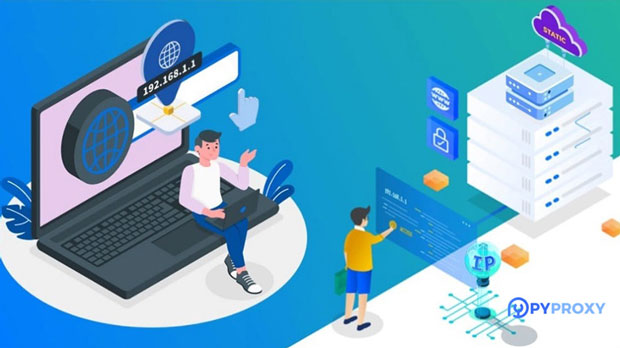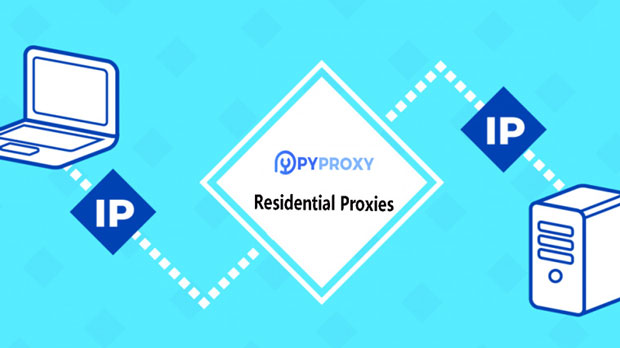What is the difference between a US proxy IP address and a regular IP address?
In the digital world, IP addresses play a crucial role in connecting devices to the internet. When it comes to browsing and interacting online, users generally rely on regular IP addresses provided by their Internet Service Providers (ISPs). However, there are alternative options, such as proxy ip addresses, that allow users to mask or change their real IP. A US proxy ip address is one of the types of proxy ips, offering distinct advantages for users in various regions. While both regular and proxy IP addresses serve the same fundamental purpose, they differ significantly in terms of anonymity, location, and application. This article will explore the differences between regular IP addresses and US proxy IP addresses, highlighting their functions, use cases, and benefits for different user needs. 1. What Is an IP Address?Before diving into the specifics of US proxy IP addresses and regular IP addresses, it’s essential to understand what an IP address is and how it works. An IP address, short for Internet Protocol address, is a unique numerical identifier assigned to each device connected to a network. It serves as the device’s identification tag on the internet, allowing it to communicate with other devices. These addresses can be either IPv4 or IPv6, with IPv4 being the more commonly used version.Regular IP addresses are assigned by ISPs and reflect the geographic location of the user. These addresses are visible to websites and online services, providing them with information about where the request is coming from. For instance, if a user in New York accesses a website, the site can detect the user’s IP address and assume the user is in the United States.2. What Is a Proxy IP Address?A proxy IP address acts as an intermediary between the user's device and the website or online service they are accessing. When using a proxy, the user’s real IP address is hidden, and the website sees the proxy’s IP address instead. This provides a layer of anonymity, as the real IP address is masked from external view. Proxies can be used for various purposes, including security, data privacy, and bypassing geographical restrictions.A US proxy IP address, specifically, is one that is based in the United States, regardless of where the user is physically located. It allows users to appear as though they are browsing from within the US, even if they are in another country. This can be valuable for accessing US-based content, overcoming geo-restrictions, or testing websites and services that are specific to the United States.3. Key Differences Between Regular IP Addresses and US Proxy IP AddressesThe core difference between regular and US proxy IP addresses lies in how they handle user identity and location. Here are some key distinctions:3.1 Geographic LocationOne of the most obvious differences between a regular IP address and a US proxy IP address is the geographic location. A regular IP address reflects the physical location of the user, as it is tied to the ISP’s infrastructure. For example, if a user is in Canada, their regular IP address will show that they are accessing the internet from Canada.On the other hand, a US proxy IP address masks the real location of the user by routing the internet traffic through a server located in the United States. As a result, websites and online services see the user as being in the US, which can be particularly useful for accessing region-restricted content or services available only to US residents.3.2 Anonymity and PrivacyWhile both regular IP addresses and proxy IP addresses serve to identify users, US proxy IPs offer a higher level of anonymity. With a regular IP address, users’ online activities can be traced back to their physical location, which may pose privacy risks. Websites and online services can track users’ browsing history, preferences, and even gather personal data.By using a proxy, especially a US proxy IP, the real IP address is hidden, making it harder to trace users’ activities. This added layer of privacy helps protect sensitive information, and it can be beneficial for individuals who are concerned about online tracking or who want to maintain anonymity when browsing the internet.3.3 Use Cases and ApplicationsRegular IP addresses are commonly used for typical online activities such as browsing websites, streaming content, and engaging with social media platforms. However, they are limited in terms of privacy and security. Regular IP addresses can also restrict access to certain online services or content due to geo-blocking.US proxy IP addresses, on the other hand, have specific applications for users who require location-based access to US-based content or who need to maintain online anonymity. Some common use cases for US proxy IP addresses include:- Bypassing geo-restrictions to access US-based websites, streaming platforms, or online services.- Conducting market research and testing website performance in the US.- Enhancing online security by masking the real IP address.- Scraping data from websites without revealing the user’s location.3.4 Speed and PerformanceWhen it comes to speed and performance, regular IP addresses typically offer faster connections since there is no intermediary server involved in the communication. The user’s device connects directly to the internet, and data is transmitted without any additional routing.On the other hand, proxy IP addresses, including US proxy IPs, may result in slightly slower internet speeds. This is because the traffic has to pass through a proxy server before reaching its destination, which can introduce latency. However, the impact on speed is usually minimal and depends on factors such as the quality of the proxy server, the distance between the user and the server, and the server’s load.4. Benefits of Using US Proxy IP AddressesUsing a US proxy IP address offers several benefits, including:4.1 Access to US-Only ContentSome online services, such as streaming platforms, online shopping sites, and government websites, restrict access to users located outside of the United States. A US proxy IP address allows users to bypass these geo-blocks and gain access to content that would otherwise be unavailable.4.2 Enhanced PrivacyAs mentioned earlier, a US proxy IP address helps mask the user’s real location, offering greater privacy and protection against tracking. This is especially important for users concerned about online surveillance or data collection.4.3 Secure BrowsingBy using a proxy server, users can encrypt their internet traffic, providing an additional layer of security against hackers and cybercriminals. This is particularly valuable when browsing unsecured networks, such as public Wi-Fi hotspots.5. ConclusionIn conclusion, while both regular and US proxy IP addresses perform the same basic function of enabling internet connectivity, they serve different purposes and offer varying levels of privacy, security, and access. Regular IP addresses are tied to a user’s geographic location and can be used for everyday browsing. On the other hand, US proxy IP addresses allow users to mask their location, access US-based content, and enhance their online privacy. Understanding the differences between these two types of IP addresses can help users make more informed decisions based on their specific needs, whether it's for anonymity, security, or content access.
2025-02-12

























































